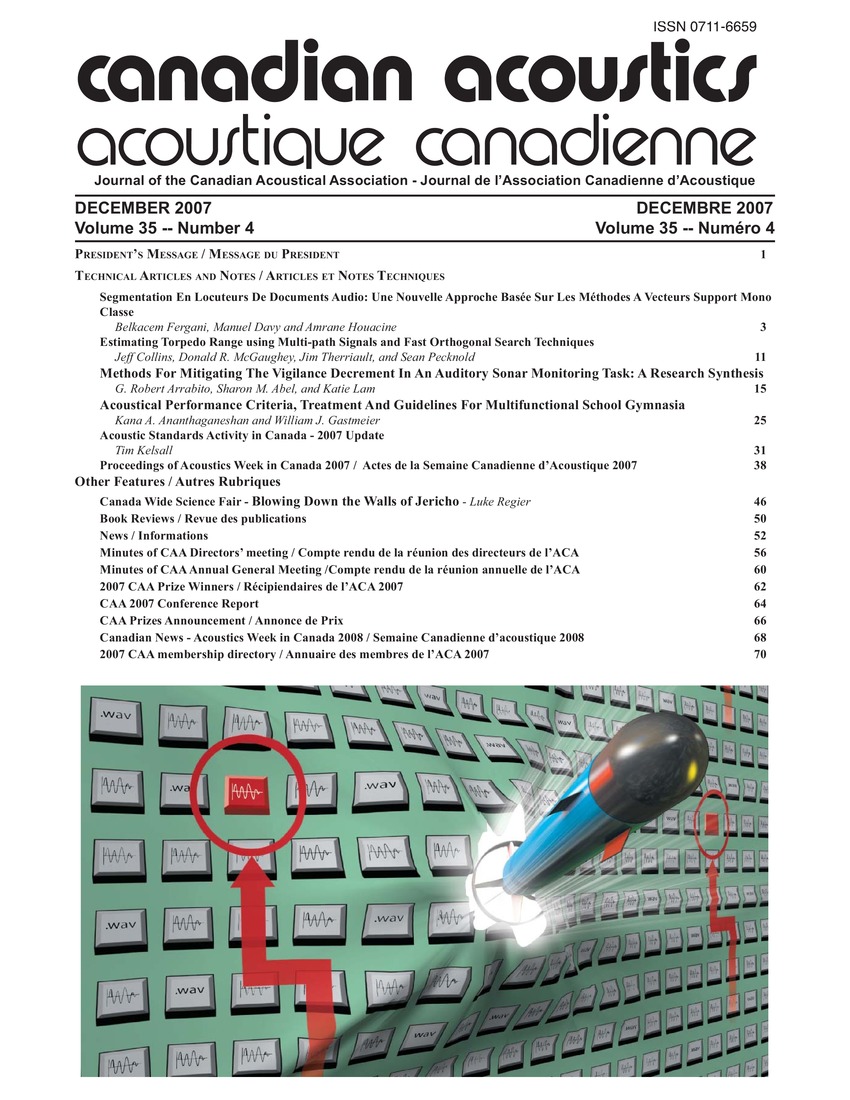Spatial vibration patterns of the Gerbil eardrum
Mots-clés :
Laser Doppler velocimeters, Mammals, Natural frequencies, Vibration analysis, Eardrum, Laser Doppler Vibrometry, Mass loading, Middle ear mechanicsRésumé
Laser Doppler Vibrometry (LDV) displacement measurements for the better understanding of middle-ear mechanics in mammals were carried out on Mongolian gerbils to measure the velocity of a vibrating surface at the nanometer level without mass loading. Displacements were measured at multiple points along the manubrium of the malleus and along a line on the eardrum perpendicular to the manubrium, in order to study the spatial vibration patterns. The spatial vibration patterns across the eardrum and along the manubrium were analyzed over the frequency range form 0.15 to 10 KHz. The similarity of the shapes of the frequency responses at all points of measurements indicates that the motion of the gerbil eardrum follows a simple pattern, with all points vibrating in phase. The manubrial displacements observed are consistent with the traditional concept of a simple rotation around a fixed axis extending from the anterior mallear ligament to the posterior includal ligament.Fichiers supplémentaires
Publié-e
Comment citer
Numéro
Rubrique
Licence
Author Licensing Addendum
This Licensing Addendum ("Addendum") is entered into between the undersigned Author(s) and Canadian Acoustics journal published by the Canadian Acoustical Association (hereinafter referred to as the "Publisher"). The Author(s) and the Publisher agree as follows:
-
Retained Rights: The Author(s) retain(s) the following rights:
- The right to reproduce, distribute, and publicly display the Work on the Author's personal website or the website of the Author's institution.
- The right to use the Work in the Author's teaching activities and presentations.
- The right to include the Work in a compilation for the Author's personal use, not for sale.
-
Grant of License: The Author(s) grant(s) to the Publisher a worldwide exclusive license to publish, reproduce, distribute, and display the Work in Canadian Acoustics and any other formats and media deemed appropriate by the Publisher.
-
Attribution: The Publisher agrees to include proper attribution to the Author(s) in all publications and reproductions of the Work.
-
No Conflict: This Addendum is intended to be in harmony with, and not in conflict with, the terms and conditions of the original agreement entered into between the Author(s) and the Publisher.
-
Copyright Clause: Copyright on articles is held by the Author(s). The corresponding Author has the right to grant on behalf of all Authors and does grant on behalf of all Authors, a worldwide exclusive license to the Publisher and its licensees in perpetuity, in all forms, formats, and media (whether known now or created in the future), including but not limited to the rights to publish, reproduce, distribute, display, store, translate, create adaptations, reprints, include within collections, and create summaries, extracts, and/or abstracts of the Contribution.


